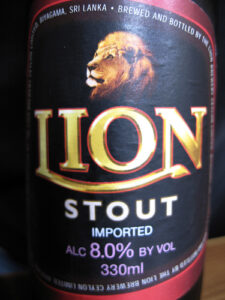Waltzing Matilda
Goose Island is a brewer in Chicago, IL hat makes some really great stuff. their Bourbon Country Stout is a favorite of mine and is highly regarded among craft beer nerds like myself. I have had 9 or so Goose Island brews and have enjoyed all of them, With the possible exception of their Christmas Ale which I dint quite get and the Pils which again just didn’t do it for me.
 Today I am having one of the Belgians that they make, called Matilda. I have had it before at Brewforia, when it was on tap there and enjoyed it, but his time it is in a 12oz bottle. It pours a nice orange peach color with a very small short lived head, settling quickly to a ring around the edge of the glass. A soft mild fruity aroma of apples, pears and a fairly pungent bite. Light malt medley of some of the similar pale fruits in the aroma. A little peppery, fairly sweet and the typical Belgian yeast character is moderate. More bitter at the end that I expected. the commercial description says that it is profusely hopped. Maybe that extra hop bitterness is what I am picking up that is throwing me off a little. I wouldn’t say that this is a classic Belgian, but one that has been Americanized a bit.
Today I am having one of the Belgians that they make, called Matilda. I have had it before at Brewforia, when it was on tap there and enjoyed it, but his time it is in a 12oz bottle. It pours a nice orange peach color with a very small short lived head, settling quickly to a ring around the edge of the glass. A soft mild fruity aroma of apples, pears and a fairly pungent bite. Light malt medley of some of the similar pale fruits in the aroma. A little peppery, fairly sweet and the typical Belgian yeast character is moderate. More bitter at the end that I expected. the commercial description says that it is profusely hopped. Maybe that extra hop bitterness is what I am picking up that is throwing me off a little. I wouldn’t say that this is a classic Belgian, but one that has been Americanized a bit.
I expect examples of the style to be more light wispy, spritzy and less up front bitterness. Still I am not opposed to creative tweaks and artistic license. There are several Belgian Sub-Styles, Belgian Strong, Belgian Dubel, Belgian Strong etc, this one is just “Belgian”. I guess in a way that means you cant say it is not to style when it is in a bit of a catch-all sub genre. Orval is the classic and highly rated example of this style. I’ll have to have one of those to compare with this.
I am still a big fan of Goose Island though.







